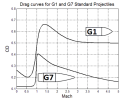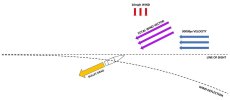Flight time= how long is a bullet in the air before it strikes the animal to make sure that the animal is holding still long enough for the bullet to get there an example feeding
Wind deflection, reading the wind if you can't read wind you can't shoot long-range, ballistic rangefinders / solvers nowadays take care of all earth base and secondary effects and give you a shoot too but you still need to read the wind to tell the rangefinder program so it can give you the Wind holds
At Barbourcreek I teach you three tools to read wind this is one of them our Mirage reading technique is so accurate were able to hit golf balls at 1000 yards in some cases in one shot if not one shot usually we can hit it in 2 to 3 which is perfect for hunting (assuming you have correct gear and marksmanship skills) these 2 things need to be accounted for.
Wind deflection, reading the wind if you can't read wind you can't shoot long-range, ballistic rangefinders / solvers nowadays take care of all earth base and secondary effects and give you a shoot too but you still need to read the wind to tell the rangefinder program so it can give you the Wind holds
At Barbourcreek I teach you three tools to read wind this is one of them our Mirage reading technique is so accurate were able to hit golf balls at 1000 yards in some cases in one shot if not one shot usually we can hit it in 2 to 3 which is perfect for hunting (assuming you have correct gear and marksmanship skills) these 2 things need to be accounted for.
Last edited:


